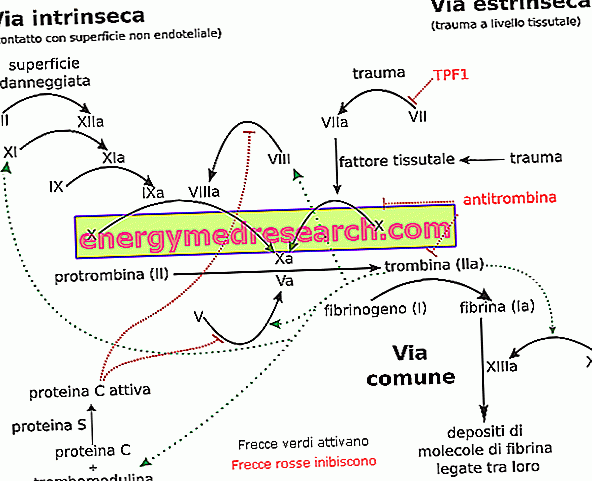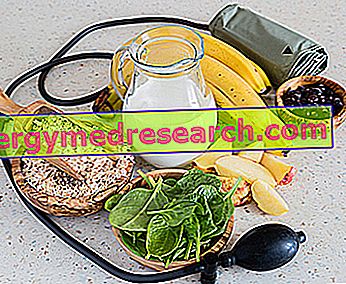Generality
Introduction to coffee
Coffee drug
Coffee is a drug * (dried and powdered) obtained from the seeds of some plants belonging to the Coffea botanical genus; the most used species for coffee production are Coffea arabica, which gives its name to the most valuable blends, and Coffea robusta, known for its higher caffeine content.

Coffee drink
Coffee is also the name used to indicate the various drinks made by infusing the ground seeds of Coffea . There are many different types, which can be classified by:
- Raw material used:
- Botanical species
- Application or not of roasting
- Grinding
- Application or not of decaffeination
- Extraction method (percolation, decoction, infusion, etc.).
Coffee, once roasted, both decaffeinated and caffeinated, is ground and then subjected to extractive processes, including mainly percolation (moka) and decoction (Greek coffee, Turkish coffee).
The most popular coffee drinks in the world are espresso, American, Turkish and Greek.
These drinks can also be used as an ingredient to formulate various recipes (non-alcoholic drinks, cocktails, ice creams, desserts etc.) or, on an industrial level, to obtain aromas or freeze-dried products.
The so-called soluble coffee is instead obtained by infusion. After being ground and subjected to this extraction technique, the liquid obtained is freeze-dried. Removing the water produces a dry extract, commonly known as soluble coffee.
Caffeine
What is caffeine?
Coffee is an extremely widespread drug, not only because it produces the famous drink of the same name, but because it contains an active ingredient called caffeine (1, 3, 7-trimethylxanthin) widely used in products of various kinds.
* Note : a drug means a "plant or part of a plant used directly, fresh or dried, to extract the active principles mainly for therapeutic purposes (it can also be used in the liquor or perfume industry)".
Types of caffeine
There are various molecular forms of caffeine; for example, in green coffee seeds (the unroasted one), caffeine is mainly available in the form of chlorogenic acid and, only after roasting (transformation from green to dark brown with coffee heat), this compound separates increasing the fraction of 1, 3, 7-trimethylxanthine.
Caffeine is not exclusively contained in coffee; other products that contain caffeine are: tea (especially black), cocoa, ginseng, guaranà, cola, Red Bull etc.
Caffeine functions
Caffeine properties
Caffeine is an alkaloid that, taken internally, performs a discrete nervine function (which interacts on the nervous system), therefore psychotropic (which has an effect on psychic functions, specifically tends to improve the level of attention).
Caffeine also has a cardio-circulatory effect, acting mainly as a vasodilator and accelerating the rhythm of the heart. Furthermore, it appears that this methylxanthine can affect lipid metabolism, increasing the release of fatty acids from fat cells. It also has a marked diuretic function.
Effectiveness of caffeine
Caffeine, belonging to the alkaloid class, has exciting properties on the central nervous system; it stimulates wakefulness and, due to its ability to improve muscular reactivity, it is often called " the doping of the poor ".
Caffeine is contained in herbal, dietetic, cosmetic and pharmaceutical products. It is often used for topical use due to its slimming and anti-cellulite properties; in particular, this methylxanthine exerts a thermogenic function, which stimulates the mobilization of fat from adipose tissue and subsequent oxidation.
Caffeine is also present in draining products and against water retention. In the pharmaceutical field, caffeine is a widely used ingredient; it is often included in the composition of important drugs such as, for example, anti-migraine.
Types of Coffee
Botanical outline
The botanical species is largely responsible for the variability of the chemical and physical characteristics found in coffee. For example, there are coffee species that have a high caffeine content; in addition to the aforementioned Coffea arabica (0.8-1.4%), it is necessary to remember the Coffea robusta (1.7-4%), which has the distinction of "stronger" coffee.
Madagascar's Coffea humboltiana has a very low caffeine content. In Brazil, through biotechnological selections, embryonic seeds have been developed, therefore of coffee seedlings naturally without caffeine. This avoids the decaffeination process, which is quite laborious and expensive.

Arabica coffee
Coffea arabica is a small tree belonging to the Rubiaceae family.
Originally from Ethiopia and the Arabian peninsula, it is currently cultivated mainly in South America, particularly in Brazil, which is the leading coffee producer in the world.
In-depth articles
MokaCaffè and healthCaffè and caffeine, benefits and risksCaffeineCaffeine and sportGuaranàCaffè: notes of pharmacognosy Coffee in brief Coffee dangersCalorie coffeeCaffeine and androgenetic alopecia Cappuccino caloriesCaffeine in bags and coffeeCaffeine in foodProduction
Coffee production
Coffee is an alkaloid drug that requires rather laborious processing and the use of advanced technologies.
- The coffee is harvested from the fruits (berries or, for some, drupes) at full maturity.
- From them the seeds are extracted, which at the time of harvesting have a greenish yellow color (green coffee).
- Then these seeds are dry-cleaned (by passing them through insufflations of hot air with a low percentage of humidity, which exfoliate the external integuments) or wet (short passage in water to facilitate the lifting of the external film, which also in this case will be then definitively removed by a jet of hot and dry air). The choice of these different types is made according to the harvesting conditions: if the seeds are harvested in favorable climatic conditions (particularly humid) then the depellicolazione is dry and vice versa.
- Subsequently the seeds pass through a rapid drying, necessary to eliminate the last residues of water that could alter their quality. The de-coated coffee is called bare coffee; subsequently, after being pre-dried, it is called pergamino coffee.
- The raw coffee is then selected to be directed to decaffeination or go directly to roasting.
- Coffee can be decaffeinated in different ways: currently the most used strategies are water decaffeination and supercritical CO 2 (more expensive). The first involves the passage of raw coffee beans into tanks of water, where active carbon filters are present. Water as a solvent extracts caffeine, making it possible to obtain an extremely light coffee, even if not completely caffeine-free. The decaffeination process has a dual function, first of all it serves to produce decaffeinated coffee, which has some success in the market, and secondly to obtain caffeine to be used for the preparation of health and pharmaceutical products.
- Once obtained, the coffee, decaffeinated or not, must be roasted. Roasting is a process of cooking seeds at temperatures of 200-240 ° C. This cooking process gives the coffee the classic blackish brown color and the organoleptic and morphological characteristics typical of the drug.

Coffee in the Diet
Coffee chemistry
Thanks to roasting, dark coffee acquires numerous organoleptic characteristics. This happens:
- First of all because the caramel sugars, giving the drug its characteristic color.
- Secondly, because caffeone is formed, which gives the seed a shiny, almost oily appearance.
The secondary metabolites of coffee are mainly represented by caffeine and by the terpenic compounds called kauranic, which give the drug numerous properties.
Nutritional properties of coffee
Nutritional role of caffeon
Caffeone is a mixture of pyridine terpenic compounds, capable of irritating gastric mucosa, causing heartburn in particularly sensitive individuals. For this reason, while coffee is contraindicated in those suffering from gastric irritability, the mild irritative activity of caffeon gives the drink eupeptic properties (facilitating digestion). In fact, irritation of the gastric mucosa favors the secretion of acids and digestion can be somehow favored.
Nutritional role of caffeine
The main nutritional characteristics of coffee are mainly due to caffeine. This alkaloid:
- Stimulates brain function (increase in waking and concentration) and promotes transmission of the nerve signal to a musculoskeletal level; increasing the transmission speed at the level of the synapses; therefore it improves muscular reactivity
- It is a cardiotonic (stimulates heart rate)
- Promotes fat mobilization in synergy with kauranic compounds
- It also has diuretic properties, which are due to its mildly irritative effects on the renal epithelium.
- It has a mainly vasodilatory action
- Has a mildly irritating activity on the gastric mucosa; this property is shared with that of the aforementioned caffeone.
Suggestions and contraindications
Tips for using coffee
In sports and slimming, to enjoy the effects of caffeine, it is good practice to consume coffee beverages at least 15 'before the performance; it is advisable not to exceed the single dose and, to prolong the effect, it could be useful to consume a second one about 45 'after the beginning of the exercise.
Contraindications for the use of coffee
Coffee is contraindicated in case of:
- Young age
- Gastroesophageal reflux disease (GERD)
- Gastritis and gastric ulcer
- Irritable colon and diarrhea
- Hemorrhoids and / or anal fissures
- Hypertension
- Cardiac disorders of various kinds
- Gestation and breastfeeding
- Anxiety
- Pharmacological therapies (especially antihypertensive and anxiolytic).
CONITINUA: coffee and health »
Recipes with Coffee
Iced coffee cream
Watch the video and find out how quick and easy it is to prepare an excellent cold coffee cream, just like the one in the bar!
Iced coffee cream
X Problems with video playback? Reload from YouTube Go to Video Page Go to Video Recipes Section Watch the video on youtubeAll Recipes with Coffee »



